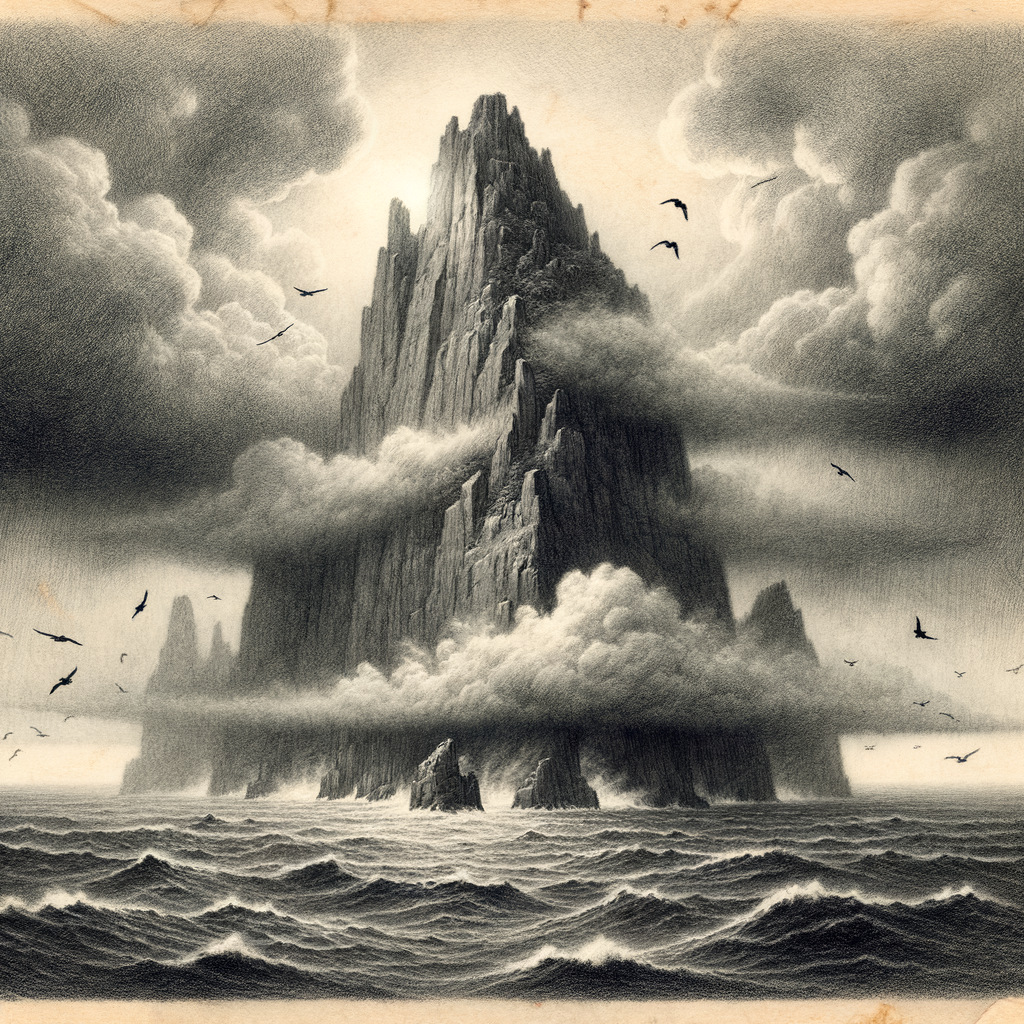Introduction to Bishop and Clerk Islets
Bishop and Clerk Islets are one of Australia’s most remote and lesser-known island groups, situated in the tempestuous Southern Ocean. These isolated islets are located approximately 33 kilometers south of Macquarie Island, a UNESCO World Heritage Site that lies between New Zealand and Antarctica. Despite their small size and inaccessibility, the Bishop and Clerk Islets hold a unique place in Australia’s geographical, ecological, and maritime history, not to mention the mythology woven around them.
Geographic Location and Geology
The Bishop and Clerk Islets represent the southernmost point of the landmass constituting Australia, excluding its Antarctic territory claims. Located at latitude 55°03′49″S and longitude 158°46′10″E, they mark the southern extent of the Macquarie Ridge — a major geological feature that rises from the ocean floor due to tectonic activity. This part of the Earth’s crust is where the Indo-Australian Plate converges with the Pacific Plate, with seismic and volcanic forces shaping the surrounding terrain over millions of years.
Geologically, the islets are composed of basaltic rock formed through volcanic activity related to the Macquarie hotspot. The islets are essentially eroded remnants of ancient volcanic cones, jutting out from the turbulent waters of the Southern Ocean. The tallest of these rocky projections reaches an elevation of approximately 45 meters above sea level.
Ecological Characteristics
Due to their extreme remoteness, the Bishop and Clerk Islets remain largely untouched by human intervention. They are uninhabited and form part of the Macquarie Island Nature Reserve, which itself is a component of the larger Tasmanian Wilderness World Heritage Area. As such, the islets are strictly protected under international and national conservation laws.
Vegetation on the islets is scarce, primarily due to the lack of suitable soil and the harsh sub-Antarctic climate marked by strong winds, low temperatures, and frequent precipitation. Nevertheless, they offer important nesting sites for a variety of seabirds, including various albatross and petrel species. The surrounding waters teem with marine life, ranging from fur seals and penguins to unique benthic organisms adapted to the cold depths.
Human Activity and Accessibility
Access to the Bishop and Clerk Islets is highly restricted. They are only reachable by boat from Macquarie Island and landings are rarely attempted due to hazardous sea conditions and the lack of natural harbors. The islets have no infrastructure or shelter, making human presence temporary and minimal.
The islets saw very limited human interaction in history. The first recorded landing on the islets occurred in 1965 by an Australian scientific team, and even today, physical access is restricted to essential scientific or management visits. The region is actively monitored as part of Australia’s efforts to preserve its sub-Antarctic environmental heritage.
Interesting Facts about Bishop and Clerk Islets
The Bishop and Clerk Islets hold a number of intriguing distinctions. For instance, they officially mark the southernmost terrestrial point of Australia that is not part of the Antarctic continent. This gives them scientific and navigational significance, especially for geographic and sovereignty purposes.
A curious fact is that despite their diminutive landmass and difficulty of access, the islets are classified as a separate sub-division within the Macquarie Island region for environmental management purposes. They have never hosted a permanent human population nor have they been used for industrial activities, unlike Macquarie Island which once had sealing and whaling settlements.
Another point of interest lies in their names: “Bishop” refers to the largest rock, while the surrounding smaller rocks are collectively known as the “Clerk”. This nomenclature has a lore-inspired flair to it, suggesting a storytelling tradition despite the remoteness of the location.
Legends and Folklore
Although the Bishop and Clerk Islets are uninhabited and rarely visited, a few legends have emerged from seafarers and explorers over the years. One such tale speaks of a ghostly ship — often described as a schooner with tattered white sails — seen circling the islets during violent storms. Sailors claim this phantom vessel appears and vanishes just as quickly, leading some to call it “The Warden of the South.”
Another local belief, passed down from early Macquarie Island explorers, is that the islets were once a single landmass that sank into the ocean after a mighty eruption, leaving behind only the summits we now see. The story goes that a “priest” figure lived on the island — hence the name Bishop — and he assigned one clerk to document the lives of seabirds. When the eruption happened, the clerk climbed to the smaller rock hoping for salvation, but both were swallowed by the sea, their images immortalized in stone.
While there are no indigenous populations tied to this landmass due to its isolation, such folklore illustrates humanity’s innate desire to personify and mythologize even the most remote edges of the Earth.
Conclusion
The Bishop and Clerk Islets stand as extraordinary sentinels of the Southern Ocean. Remote, storm-lashed, and seldom visited, they serve as a pristine example of Earth’s untamed natural beauty and geological history. As Australia’s southernmost outpost, they are silently crucial — from protecting biodiversity to representing the limits of continental presence. Though not hospitable to human life, the islets hold an allure rooted in mystery and the majesty of isolation, making them a subject of ongoing interest for scientists, conservationists, and storytellers alike.


